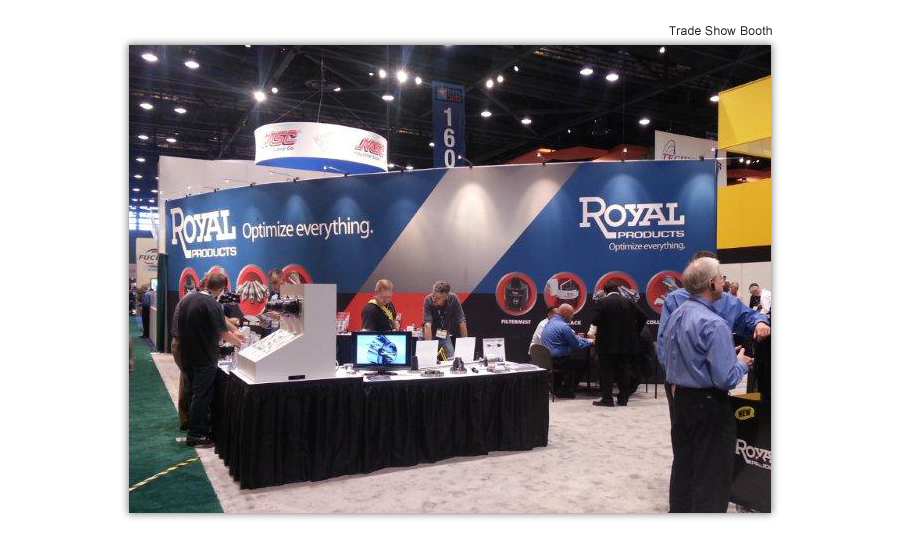
Maximizing Return On Your Trade Show Exhibit
For many industrial marketers, trade shows are the biggest outreach to customers and prospects, representing the largest single commitment of marketing dollars and manpower.
But getting attention and drawing visitors is a huge challenge, especially for smaller companies without the deep pockets to take enormous space filled with glitzy displays and crowd-drawing celebrities. The results can make – or break – a company’s year in sales. Simply having a booth at a show does not guarantee success, especially for smaller companies exhibiting at the very big shows.
There are several things to consider as you develop your company’s trade show plans.
Align your audience to your business goals:
If your goal is to reach manufacturing decision makers in specific markets (ie: energy, medical, aerospace, automotive, construction), look for shows targeted to those audiences. In addition to national shows, consider regional shows, since regional events may be easier for your prospects and customers to attend.
Booth Design:
Design of the booth is an area where many exhibitors go astray, spending more than necessary and pushing potential visitors away rather than inviting them in to talk with you. Some specific tips…
Keep the booth space open and inviting. Too much clutter can discourage prospects from coming in.
Use bold, eye-catching graphics with straightforward easy-to-read messaging. The benefits of the product or service you offer have to be made crystal clear and must be easily seen.
For one of our clients, Royal Products, a relatively smaller maker of machine tool accessories exhibiting at a giant international machining show with more than a thousand exhibitors, we put only the company name and logo in huge letters across the booth 11-foot high wall so the name popped as people came down the aisle. Many companies use their exhibit walls to assault passers-by with visual information. We went the other way, keeping it clean and simple, creating an impressive “stage” for the real star of the show, the company’s products.
Use height to your advantage. You’ll need to check with show management on any restrictions, but signage or a display that goes above the height of the curtain walls and standard portable displays (about 8 feet) may be seen from down your aisle and even from other aisles. Lighting it brightly, from within or from outside, will make your booth even more noticeable, regardless of how many square feet your budget can afford.
Include a quiet room or a secluded area for private talks.
If you plan to give presentations at your display, provide ample seating and consider a refreshment bar.
How your people interact with prospects at the booth can be critical to your trade show success. Be sure all your people are up to date on new products and services and any new company policies.
Advertising and Promotion:
Determine your campaign theme and messaging; develop strong supporting creative and using it across all appropriate media channels. It’s critical to carry this theme throughout the show in your booth graphics and show literature.
For Mill-Max, a maker of precision-machined electronic interconnect components, we included a burst in their print ads that had their booth information at Electronica, the giant international trade show for the electronics industry, with more than 73,000 trade visitors and nearly 2,700 exhibitors. We also used a top trade journal in the field for a polybag insert with a sell sheet on the show exhibit and a CD containing the entire product catalog. We also promoted their appearance at the show through their social media outlets.
Everything should call attention to your trade show participation. Even email signatures should include invitations to visit you at your booth.
A Pre-show promotion checklist should include:
— Develop a PR distribution list and send news releases to appropriate trade publications and local papers in the trade show host city
— Review your in-house database looking for people who have shown interest in your products/services in the past. Send these prospects free exhibit passes (often available at no charge from show management).
— Purchase pre-attendee registration lists and send an invitation to visit your booth, with details about your exhibit. Or take it a step further by offering an enticement to visit, such as a free gift.
— Consider placing an ad in the show’s program.
On-site promotion
Review the Exhibitor Manual for details on what promotional opportunities before, during and after the show are offered by show management. If the show has a press room, post news releases and material about your products and try to meet with trade reporters covering the show.
There may be many other opportunities to reinforce your brand throughout the show and generate traffic to your booth. Look into event sponsorships, banners in key locations, PR and ads in the show daily papers dropped off at the hotels and distributed at the show, posters on the hotel/show shuttle bus, and brief promotional videos in select venues.
After the show, the work isn’t over.
In fact, if you’re doing it right, the real work begins after the show closes.
Some quick tips:
• Follow-up should be fast. Fulfill information requests within 24 hours. It tells prospects you move quickly and you mean business.
• Get your literature past the “gate keeper” by using teaser lines like “Requested information from XXX show.”
• Get qualified leads to your sales force quickly.
• Develop a follow-up program for ongoing contact with longer-term prospects.
Some advance planning and solid, coordinated follow-through can make your trade show exhibit a successful investment.
Read the full article online on Industry Week’s website: https://www.industryweek.com/leadership/maximizing-return-your-trade-show-exhibit
1 Comments

811 West Jericho Turnpike
Smithtown, NY 11787
631.265.5160
Love these tips! We often talk about display design, as well – exhibitors don’t always realize how important it is! http://bit.ly/13oPIIW